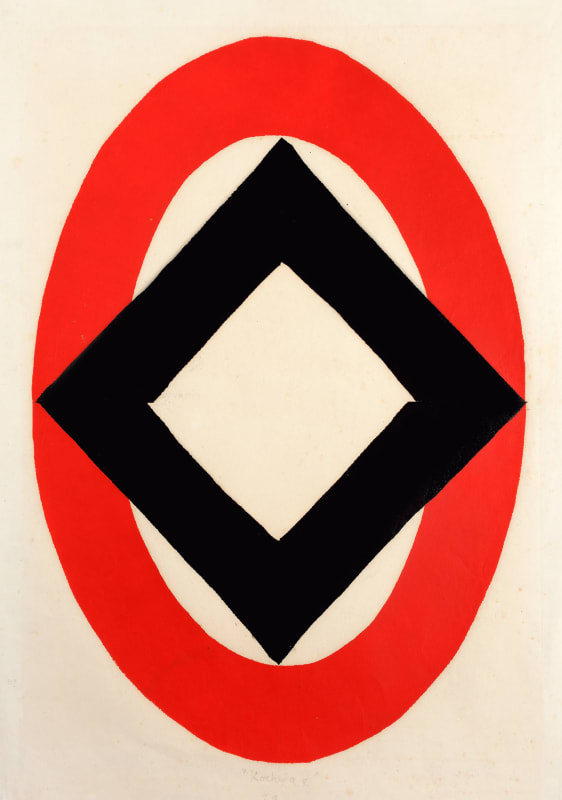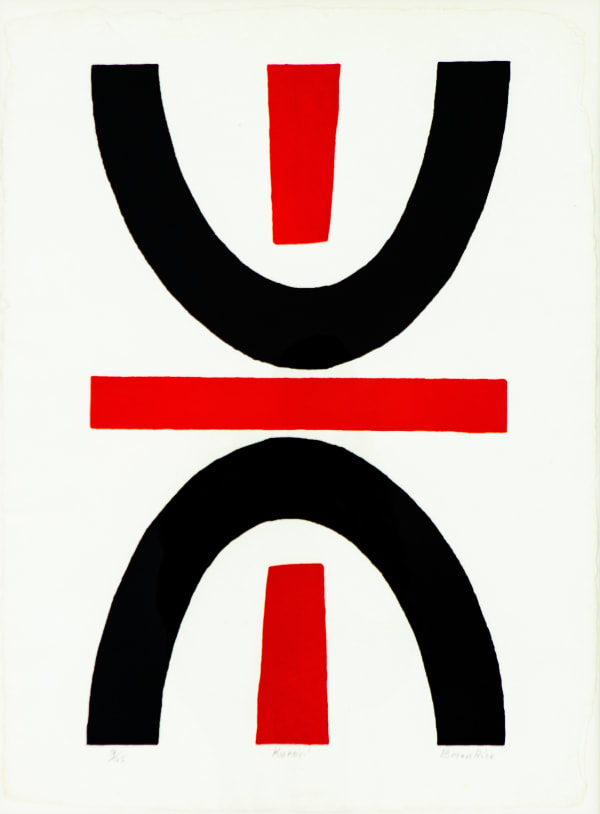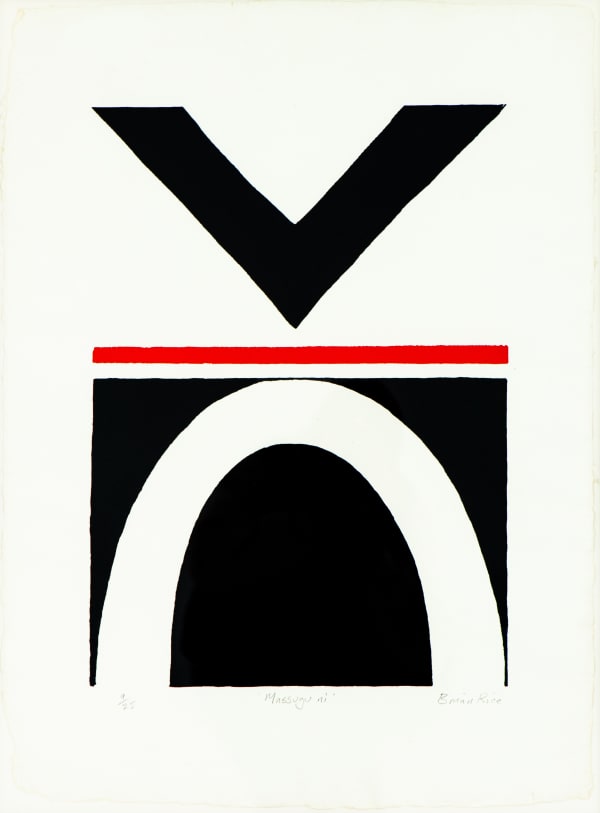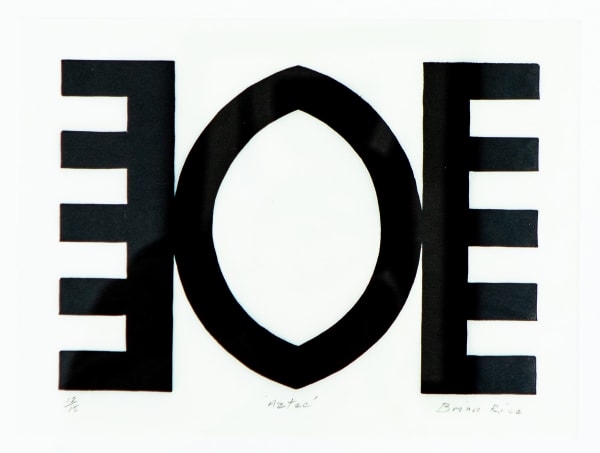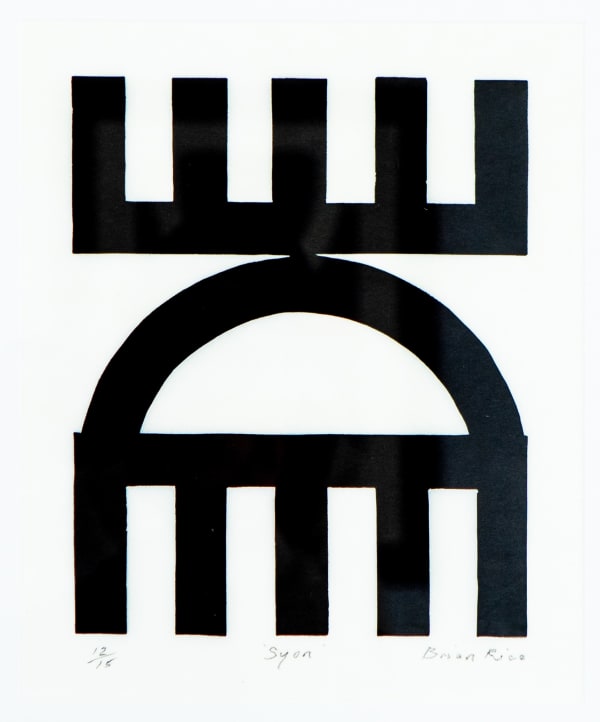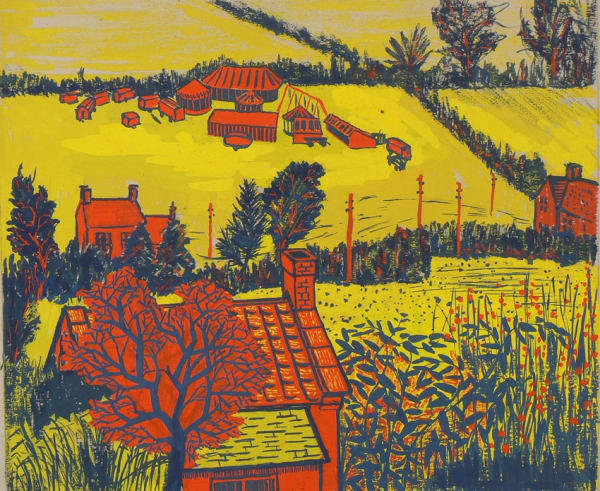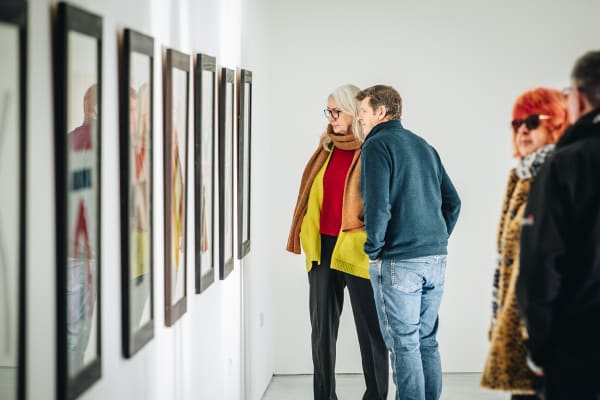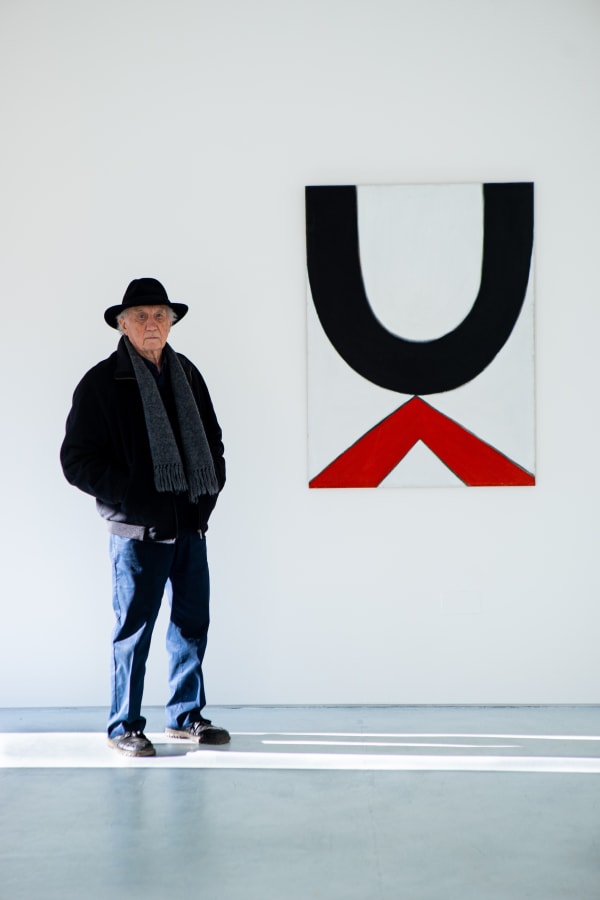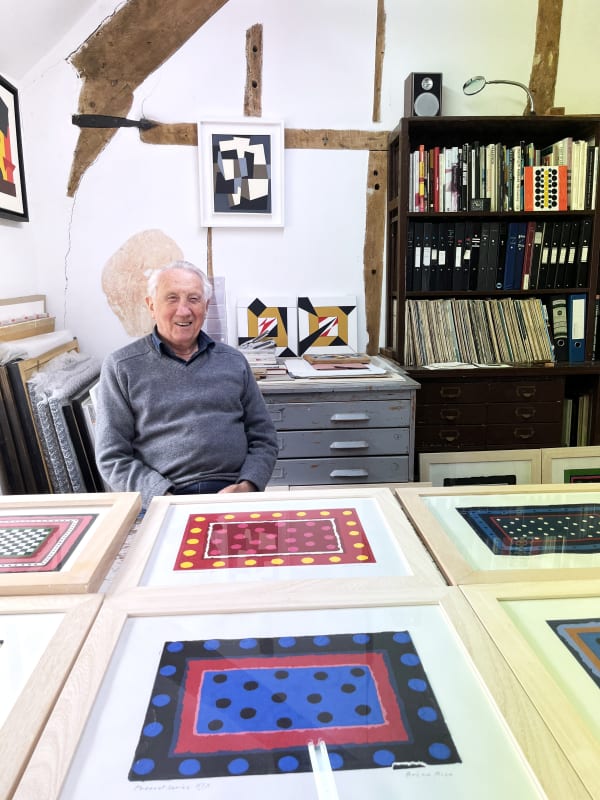Brian Rice
Born in Yeovil, Rice grew up in Tintinhull and Montacute. He attended Yeovil School of Art and became friends with fellow artist Derek Boshier. In the 1960s, Rice was at the heart of the London art scene, producing some of the era’s most groundbreaking paintings and prints.
In the mid-1970s, Rice left the pressures of London and retreated to his roots in the West Country, more or less giving up painting for a while. He bought a 50-acre sheep farm on the flanks of Eggardon Hill near Bridport and taught part-time at Brighton College of Art (now University of Brighton). Working the land he discovered Bronze Age archaeological remains and an 18th-century Donyatt pottery dish painted with the face of a Green Man, a symbol of rebirth. His finds inspired a new artistic direction, focused on the landscape and ancient traces of habitation, work that continued at his present home on the Dorset/Devon/Somerset borders. In more recent years his painting has revisited his early skill with colour and pure abstraction, resulting in works of great vibrancy.
In 1995 he held his first exhibition for 20 years. The solo show at The Meeting House in Ilminster was followed in 1998 by his ‘Art and Archaeology’ solo exhibition at Somerset County Museum in Taunton, where he displayed his works alongside his numerous finds from the New House restoration, including around 20,000 shards of pottery. Exhibitions in London, St Ives and Dorset ensued, including a highly successful retrospective of his 1960s work at the Redfern Gallery in Cork Street in 2014. His most recent retrospective 'The Art of Brian Rice: 60 Years of Paintings and Prints' was held at the Museum of Somerset, Taunton in 2022.
In early 2023 CLOSE held a solo show of Rice's screenprints, 'Red, Black and White'. Read more about the exhibition here.
-
 The Creation of The Buddha of Time Passed, 1962View more details
The Creation of The Buddha of Time Passed, 1962View more details -
 Goran Nasai, 1963View more details
Goran Nasai, 1963View more details -
 Doshite, 1963View more details
Doshite, 1963View more details -
 Kochira e, 1963View more details
Kochira e, 1963View more details -
 Achira e, 1963View more details
Achira e, 1963View more details -
 Daijobu, 1963View more details
Daijobu, 1963View more details -
 Kamui, 1963View more details
Kamui, 1963View more details -
 Kuroi, 1963View more details
Kuroi, 1963View more details -
 Tomare, 1963View more details
Tomare, 1963View more details -
 Masugu Ni, 1963View more details
Masugu Ni, 1963View more details -
 Aztec, 1963View more details
Aztec, 1963View more details -
 Hadari e Migi e, 1963View more details
Hadari e Migi e, 1963View more details -
 Syon, 1963View more details
Syon, 1963View more details -
 Pennant IV, 2009View more details
Pennant IV, 2009View more details -
 Pennant XX, 2010View more details
Pennant XX, 2010View more details -
 Pennant XXII, 2010View more details
Pennant XXII, 2010View more details -
 Pennant XXV, 2010View more details
Pennant XXV, 2010View more details -
 Pennant XXVIII, 2010View more details
Pennant XXVIII, 2010View more details
-

Brian Rice exhibition at The Art Stable, Dorset
10 February - 9 March 2024 30 Jan 2024'In the Beginning' is a solo exhibition of paintings, drawings and prints from Brian Rice's student years at Yeovil School of Art and Goldsmiths College....Read more -

Opening Day of Brian Rice | Red, Black and White
25 Jan 2023Thank you to all those who came to the opening of Brian Rice | Red, Black and White on Saturday 21 Jan 2023 - A...Read more -

BRIAN RICE IN CONVERSATION WITH PRUE O'DAY
24 Jan 20237.00 - 8.30PM, THURSDAY 16 FEBRUARY 2023 A unique opportunity to join us in a discussion led by artist Brian Rice, in conversation with Prue...Read more -

Close Ltd Welcomes Brian Rice
19 Apr 2022Close Ltd are very pleased to welcome Brian Rice. Born in Yeovil, Rice moved to London in the 1960's and was at the heart...Read more
Born in Yeovil, Rice grew up in Tintinhull and Montacute. He attended Yeovil School of Art and became friends with fellow artist Derek Boshier. In the 1960s, Rice was at the heart of the London art scene, producing some of the era’s most groundbreaking paintings and prints.
In the mid-1970s, Rice left the pressures of London and retreated to his roots in the West Country, more or less giving up painting for a while. He bought a 50-acre sheep farm on the flanks of Eggardon Hill near Bridport and taught part-time at Brighton College of Art (now University of Brighton). Working the land he discovered Bronze Age archaeological remains and an 18th-century Donyatt pottery dish painted with the face of a Green Man, a symbol of rebirth. His finds inspired a new artistic direction, focused on the landscape and ancient traces of habitation, work that continued at his present home on the Dorset/Devon/Somerset borders. In more recent years his painting has revisited his early skill with colour and pure abstraction, resulting in works of great vibrancy.
In 1995 he held his first exhibition for 20 years. The solo show at The Meeting House in Ilminster was followed in 1998 by his ‘Art and Archaeology’ solo exhibition at Somerset County Museum in Taunton, where he displayed his works alongside his numerous finds from the New House restoration, including around 20,000 shards of pottery. Exhibitions in London, St Ives and Dorset ensued, including a highly successful retrospective of his 1960s work at the Redfern Gallery in Cork Street in 2014. His most recent retrospective 'The Art of Brian Rice: 60 Years of Paintings and Prints' was held at the Museum of Somerset, Taunton in 2022.

